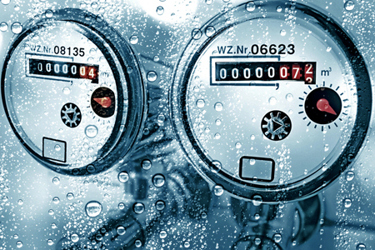Homing In On Leaks: Rethinking AMI's Role In Water Conservation

By Kevin Westerling,
@KevinOnWater

Water utilities worldwide face mounting pressure to conserve water as climate change, drought, and aging infrastructure put increasing strain on supply systems. For years, utilities have primarily focused on detecting and fixing leaks in the distribution network. These leaks are often both more costly and more easily noticed. Pinpointing leaks inside homes can be challenging, with most only discovered when water bills spike or visible signs appear.
However, the proliferation of advanced metering infrastructure (AMI), or smart meters, is shifting this trend. New research indicates that their targeted deployment in leak-prone households, leveraging near real-time water use monitoring, could maximize AMI's value.
Leak-Focused Savings
The global market for smart meters is growing rapidly, with forecasts expecting it to rise from $26.36 billion in 2024 to $46.14 billion by 2030. For water specifically, Market research company Technavio predicts a compound annual growth rate (CAGR) of 11% through 2028, largely driven by the need to curb non-revenue water losses (NRW) and manage limited resources.
However, smart meters are expensive for many water utilities. Depending on features and installation costs, smart meters can range from $100 to over $1,000 per unit. That makes strategic deployment — especially when financial returns are under scrutiny — more important than ever.
A recent randomized controlled trial by researcher Jacob Rupiper, conducted with the East Bay Municipal Utilities District (EBMUD) in California, offers a new look into where AMI can drive even greater savings.
The study compared two groups:
- A control group using AMI that received standard Home Water Reports (HWRs).
- A treatment group (which the study calls “AMI+”) that had the same meters and HWRs but also received AMI-enhanced features such as real-time alerts, online dashboards, and leak notifications.
Data showed the latter group used 5.24 fewer gallons per household per day, equal to a 2.7% reduction in total water use. Nearly 93% of that reduction was directly tied to leak detection and repair.
Digging deeper, the study found that homes with pre-existing leaks showed the most dramatic changes. These households reduced water use by 30 gallons per day after receiving advanced communication. By contrast, homes without leaks showed no meaningful change in usage, with just 0.44 gallons per day saved.
In addition, treatment homes had 1.08 fewer leaks per year and saw leaks resolve an average of 116 hours sooner than the control group. These shorter, less frequent leaks translated directly into reduced usage and reduced costs.
When it comes to the financial side, the implications are significant. For households with leaks, AMI+ participation yielded savings of $60 per year; in leak-prone homes, the payback period for AMI+ was about four years. However, when AMI+ was deployed across all households regardless of leak status, the payback period ballooned to more than 41 years.
Given this, along with the high costs of smart meters and the limited budgets many utilities are facing, the focus must be on high-leak-risk homes for advanced AMI deployment.
The Challenge: Predicting Leak-Prone Homes
Of course, in order to do this, water utilities must first determine which homes are leak-prone before installing smart meters. Traditional methods like billing history can help detect ongoing large leaks but are less effective for identifying short or intermittent ones.
That said, even without pre-targeting, AMI still proves valuable. By reducing the frequency and duration of leaks across the board, it prevents problems that might not be visible or even detected by traditional means. Still, the most efficient path forward likely involves combining historic billing data, customer-reported issues, and/or neighborhood leak trends to inform smarter rollouts.
Conservation Without Behavioral Change
According to the study, an often-understated benefit of AMI-facilitated leak repair is that it doesn’t require homeowners to change behavior. While other conservation strategies, such as water use audits or social norm messaging, rely on people making conscious choices to reduce consumption, fixing a leak often requires one-time action. The savings, however, are ongoing.
These “passive” savings are also additive. Households in the AMI+ group were already receiving HWRs, which are known to reduce water use by 3% to 5%. The study found that AMI+ achieved additional reductions on top of those savings. This reinforces the notion that AMI-based conservation doesn’t compete with but rather complements existing conservation programs.
The rapid proliferation of AMI systems can be justified by a number of benefits, including the ability to detect leaks. But the real opportunity lies in using AMI tools to reduce the duration and recurrence of leaks, particularly in households most prone to them. As a result, utilities are better able to deliver tangible water and financial savings faster, justify investments, and help customers conserve without asking them to change their habits. As utilities weigh the cost-benefit of AMI deployment in a tightening regulatory and environmental landscape, the smartest move may not be going all-in everywhere but going all-in where it counts.
